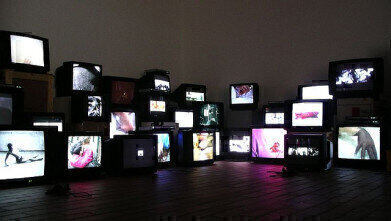News
How Has NASA Improved My TV?
Nov 30 2015
Today, the sophistication of television sets is nothing less than remarkable. From 3D technology to curved screens, nothing is impossible. While you may think that the manufacturers are responsible for the innovations, the truth is that NASA has also played a pivotal role in the development of next generation TVs. Not to mention the plethora of channels that we’re able to tune into.
So how exactly has NASA contributed to the improvement of your TV since the first station went live back in 1928? Read on as we delve into the history of the TV, and the role of the National Aeronautics and Space Administration.
The emergence of commercial TV channels
After the launch of W2XB NASA started to fast-track the rise of television by extending the reach of TV broadcasts. The administration’s first satellite (Explorer I launched in January 1958) played a key role in extending range, as well as improving quality and longevity of broadcasts. Ultimately, this helped AT&T launch the world’s first commercial satellite in 1962. Known as the Telstar I, it was used to power the world’s first transatlantic television transmission between the USA and France. The success was followed by the launch of NASA's Applications Technology Satellites Program (ATS) which continues to fuel the multibillion dollar commercial TV market we enjoy today.
Other innovations
For those who are addicted to satellite TV channels such as SKY, NASA actively develops technology designed to improve picture and sound quality. The administration’s Multistage Depressed Collector (MDC) amplifying device makes UHF satellites far more efficient while the latest data from the Shuttle Radar Topography Mission used next generation 3D mapping technology to support the development of live 3D broadcasts.
Every day, the in-house technology developed by NASA is used by a myriad of companies to pioneer new products. These are known as spin off technologies that are made possible by the NASA Technology Transfer Program.
Space technology is continually infiltrating into our everyday lives, including the food and beverage sphere. In the article ‘Testing Wheat Grain Authenticity with Fast, Non-destructive Multispectral Image Analysis’ the authors explores how the use of precise reflectance data at multiple wavelength bands is used to display a colour rich range that’s far wider than human visual perception. Unsurprisingly, this technology was originally developed for satellite image analysis. It allowed scientists to reveal high-dimensional patterns that would not otherwise be seen.
Image via Flickr Creative Commons. Credits: Paul Stevenson
Digital Edition
Lab Asia Dec 2025
December 2025
Chromatography Articles- Cutting-edge sample preparation tools help laboratories to stay ahead of the curveMass Spectrometry & Spectroscopy Articles- Unlocking the complexity of metabolomics: Pushi...
View all digital editions
Events
Jan 21 2026 Tokyo, Japan
Jan 28 2026 Tokyo, Japan
Jan 29 2026 New Delhi, India
Feb 07 2026 Boston, MA, USA
Asia Pharma Expo/Asia Lab Expo
Feb 12 2026 Dhaka, Bangladesh



















